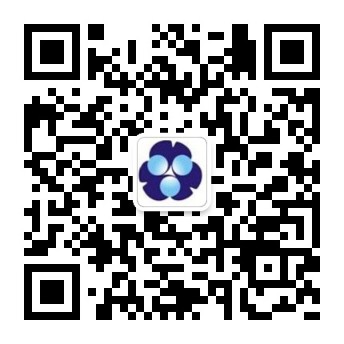From Artemisinin and Arsenic to See the Road of Traditional Chinese Medicine to the World
Update time:2021-07-04
After years of tackling tough problems, Tu Youyou and his team have made new progress in "anti-malarial mechanism research", "causes of drug resistance", and "adjusting treatment methods". Recently, they proposed practical and feasible treatment plans to deal with the problem of "artemisinin resistance".
On the evening of June 16, a blockbuster announcement that "Tu Youyou team will release major scientific research progress tomorrow" spread in the industry.
On the morning of June 17, the scientific research results were officially announced: In response to the "drug resistance" problem that artemisinin has emerged in some parts of the world in recent years, Tu Youyou and his team have worked hard for many years to study the "anti-malarial mechanism" and "the cause of drug resistance." New research progress has been made in "adjustment of treatment methods", and a practical and feasible treatment plan to deal with the problem of "artemisinin resistance" has recently been proposed.
China Pharmaceutical Industry Information Center drug comprehensive database PDB shows that in recent years, the domestic key city hospitals antimalarial drug market has grown steadily, and more than 99% of the market is dominated by hydroxychloroquine.
1561341827478.jpg
General Tu Youyou brought Chinese medicine and traditional Chinese medicine out of China to the world, but there is a lot of controversy about Chinese medicine and traditional Chinese medicine on the Internet. In fact, since the spread of Western medicine to the Republic of China, similar voices have been heard: Scholars at that time insisted on different opinions. Wang Daxie proposed "abolishing Chinese medicine and traditional Chinese medicine". Yu Yan advocated "abolishing medicine and keeping medicine", and Yun Tieqiao advocated it. Western Medicine Huitong? Ding Fubao suggested that Chinese medicine should be scientific?......
The source of all controversy is naturally the deficiencies of Chinese medicine that have been passed down for thousands of years from the perspective of modern science, such as excessive reliance on outdated theories, lack of consistency in diagnostic methods, and the emphasis on individuality and lack of control in medical records. It must be admitted that limited by research methods and scope of observation, it was indeed difficult for medical workers at that time to comprehensively and objectively evaluate the effectiveness and safety of a certain drug.
Just taking malaria as an example, the Tu Youyou working group collected 574 anti-malarial prescriptions and 108 anti-malarial Chinese medicines, and finally verified the effective ones.
Tu Youyou discovered that the neutral extract of artemisinin had an antimalarial effect at the beginning, and he noticed that the potency of the crude extract was unstable. The research team did not simply stop the experiment, but actively conducted in-depth investigations, and finally confirmed that different harvesting seasons had an impact. In fact, how to ensure the consistent quality and effect of traditional Chinese medicine is still an unavoidable problem for Chinese medicine workers.
Because of this, Mr. Tu Youyou's experience is particularly precious. Screening and documenting a large number of traditional Chinese medicines, looking for potential effective single drugs, then trying to confirm the effective components, and finally adjusting the chemical structure according to the ready-made templates to create new chemical drugs-such a process is much shorter than the development time of traditional chemical drugs , Is conducive to the Chinese pharmaceutical industry to find another way and catch up.
In addition, it is worth pointing out that China has another important scientific discovery from traditional Chinese medicine-Pishuang. In the early 1970s, a rural doctor in Heilongjiang Province used arsenic, toad venom and mercury as a compound to treat various patients, including cancer patients, and it seemed to have achieved certain results. Later, the pharmacist Han Taiyun of the Pharmacy Department of the First Affiliated Hospital of Harbin Medical University made a preparation called "Ai Ling No. 1", which contained arsenic, toad venom and mercury, which actually cured some cancer patients.
arsenic is poisonous, and how to use it to treat diseases is a difficult question. In the past, people in both the West and China have used them, but these people are not the real "discoverers" because they have not determined what diseases arsenic can be used to treat. If they are not careful, they may even kill people. Moreover, the explanation of "fighting poison with poison" is also far away. Far from enough.
From 1973 to 1979, Zhang Tingdong of the Department of Traditional Chinese Medicine, the First Affiliated Hospital of Harbin Medical University, did a series of work on the basis of predecessors and determined that arsenic trioxide can treat acute promyelocytic leukemia. After the 1990s, this treatment method was promoted throughout the country and later in the world, saving the lives of many leukemia patients.
Today, there is only a scientific path in the research of Chinese medicine, or is there a path different from science? this is a problem. Related to this, today's standards for Chinese medicine can only be scientific standards, or are there standards different from science? It has also become a problem. Examining science and reviewing history, we can see that the research of Chinese medicine can only be scientific research, and the standards of Chinese medicine must also be scientific standards. And Tu Youyou, Zhang Tingdong, etc. all established Chinese medicine on the basis of science, so that the world gradually understands Chinese medicine, understands Chinese medicine, and accepts Chinese medicine.



